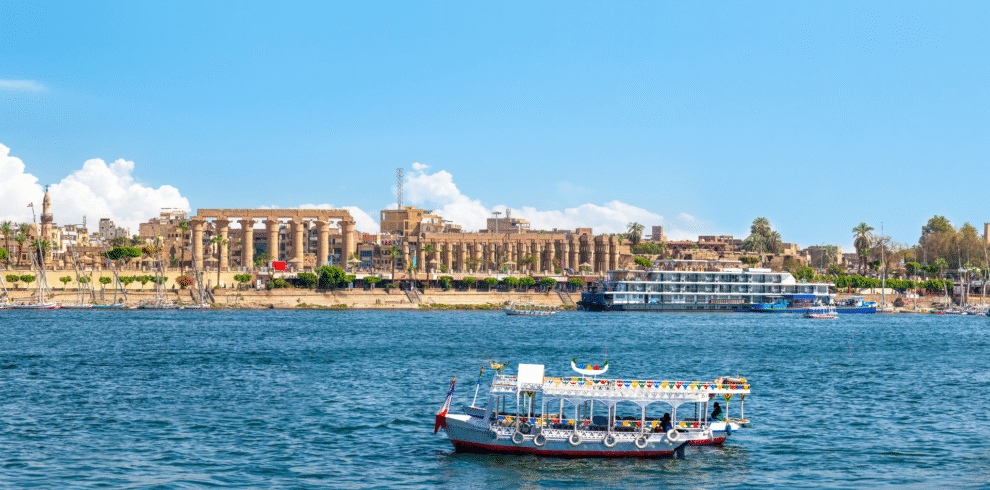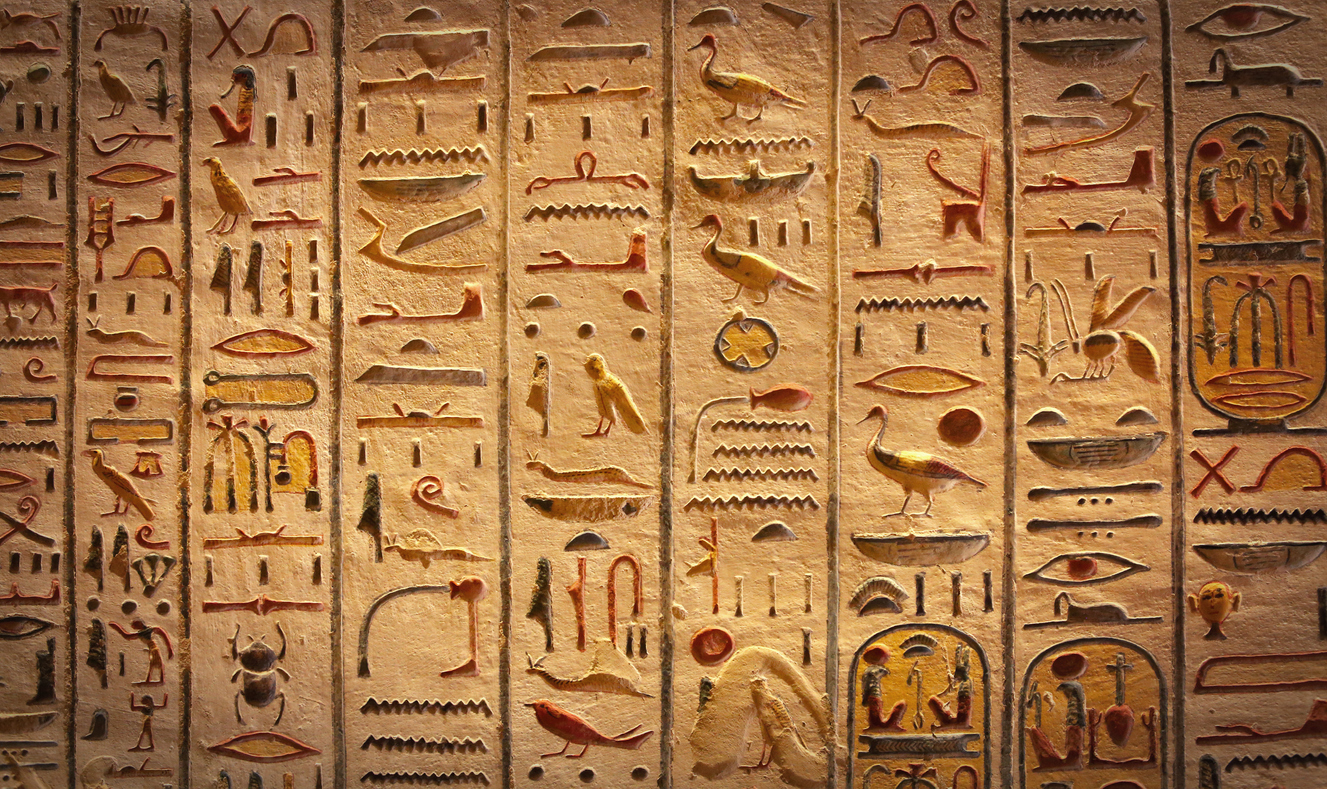Ancient Egyptian Temples: A Journey to Explore
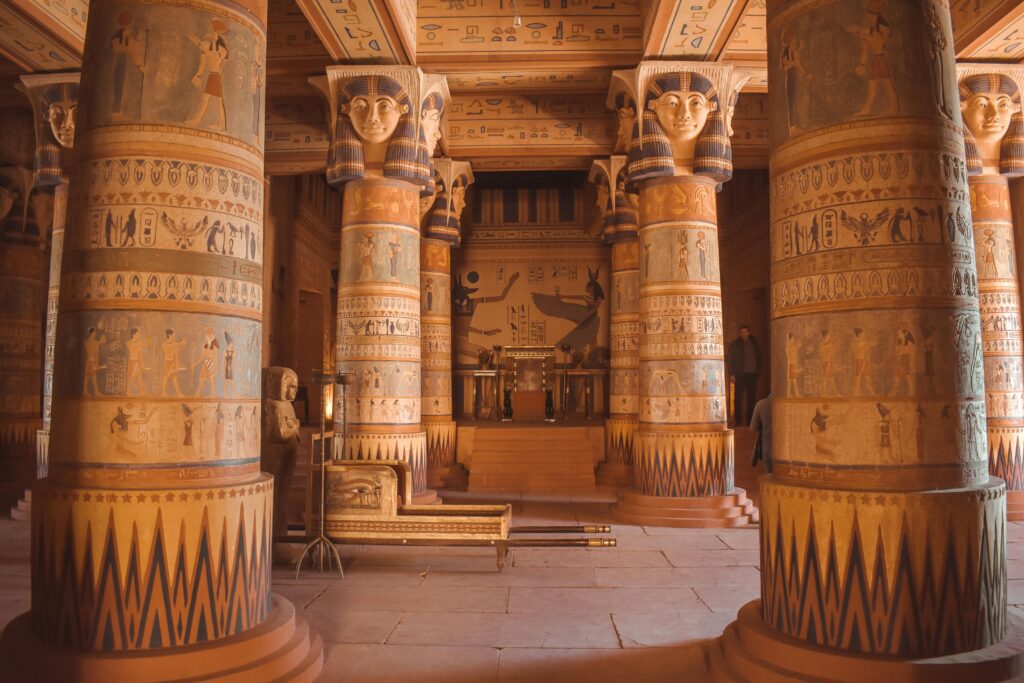
About Religion in Ancient Egyptian Temples
Ancient Egyptian temples mainly based on Ancient Egyptian religion and comprises a complex religious system of beliefs. In addition to special rituals that represented an integral part of ancient Egyptian culture.
Religion centered on the interactions of the Egyptians with numerous gods, believed to exist and govern the world.
The Relation Between Egyptians and Pharaohs
The ancient people focused on the Pharaohs, believing that they possessed sacred authorities by virtue of their positions. These kings acted as the connection between people and the gods, obligated to support the gods through rituals and sacrifices.
The Pharaohs allocated huge resources to religious rituals and to construct massive temples. These huge and impressive temples still amaze tourists who visit Egypt until today.
In our article, we will point out the most important and magnificent ancient Egyptian temples that survived with glory.
1. The Temple of Abu Simbel: Ancient Egyptian Temples

The Temple of Ramses II of Abu Simbel is simply one of the most breathtaking ancient Egyptian temples.
When visiting Egypt, numerous travelers explore the complex of Abu Simbel. Two huge rock-cut temples constitute the construction near the city of Aswan.
The Relocation and The History of The Temple of Abu Simbel
After the construction of the High Dam in the 1960s, they relocated the whole complex. Abu Simbel complex is now located at the Southernmost point in Egypt about 290 kilometers to the South of Aswan.
Because of its greatness and historical importance, UNESCO includes Abu Simbel in the world heritage sites. Ramses II constructed the temples of Abu Simbel in 1265 BC after a construction process that remained for 21 years.
The Temple of Abu Simbel Today: Ancient Egyptian Temples
The complex consists of two marvelous temples. The first is the Temple of Ramses, beloved of the god Amun, and the second temple. The smaller one is the Temple of the goddess Hathor, the deity associated with beauty in ancient Egypt. In 1813, a Swiss orientalist discovered this magnificent temple and was able to enter the larger temple three years later. In the 13th century BC, they dedicated the larger temple at Abu Simbel to the three most dominant gods in Egypt: Amun, Ra, and Ptah.
The facade of this temple, adorned with four huge statues of Ramses II, was cut out of rocks and stands as its most marvelous feature. The temple’s huge and notable hypostyle hall characterizes the interior, measuring 18 meters in length and 16.7 meters in width. Additionally, the smaller temple at Abu Simbel, known as the Temple of Queen Nefertari, sits approximately 100 meters to the northeast of the larger temple.
2. The Karnak Temple: Ancient Egyptian Temples
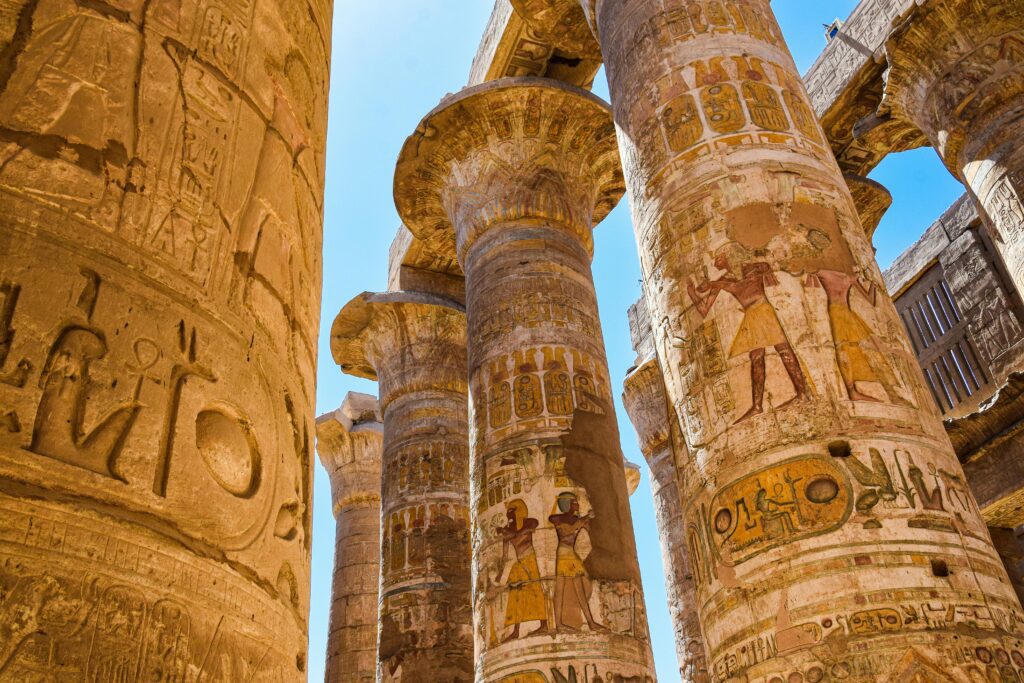
The god Amun, the king of gods in ancient Egypt, is the primary focus of dedication at the Karnak Temple, which stands as the largest ancient Egyptian construction in the world.
Consequently, many tourists who visit Egypt are eager to explore the Karnak Temple during their tours in Luxor.
Discover Egypt’s temples with our package: Pyramids & Pharaohs
The Construction of The Temple of Karnak
Builders meticulously constructed the Temple of Karnak over thousands of years, with its massive pillars, various sections, and colossal statues. The construction process began during the reign of the Middle Kingdom and continued until the end of the Ptolemaic period in Egypt.
The Karnak Temple, located just three kilometers north of Luxor Temple, connects to it via an avenue of sphinxes. Remarkably, it was Amenhotep I, during the middle of the 16th century BC, who first conceived the idea of establishing a temple for the worship of the god Amun at Karnak.
The Most Interesting Elements of The Karnak: Ancient Egyptian Temples
The hypostyle hall in the Temple of Karnak features its huge pillars and stands as one of the most marvelous sections. Ramses II constructed these massive columns, which are truly a wonder to behold. Another captivating feature of the Temple of Karnak is the famous obelisk of Queen Hatshepsut, standing at an impressive height of around 30 meters.
Additionally, the temple’s Sacred Lake served for ablution purposes and remains unique in Egypt due to its size. Adjacent to the sacred lake, they erected the renowned scarab statue, crafted from granite during the reign of Tuthmosis III.
3. The Luxor Temple: Ancient Egyptian Temples
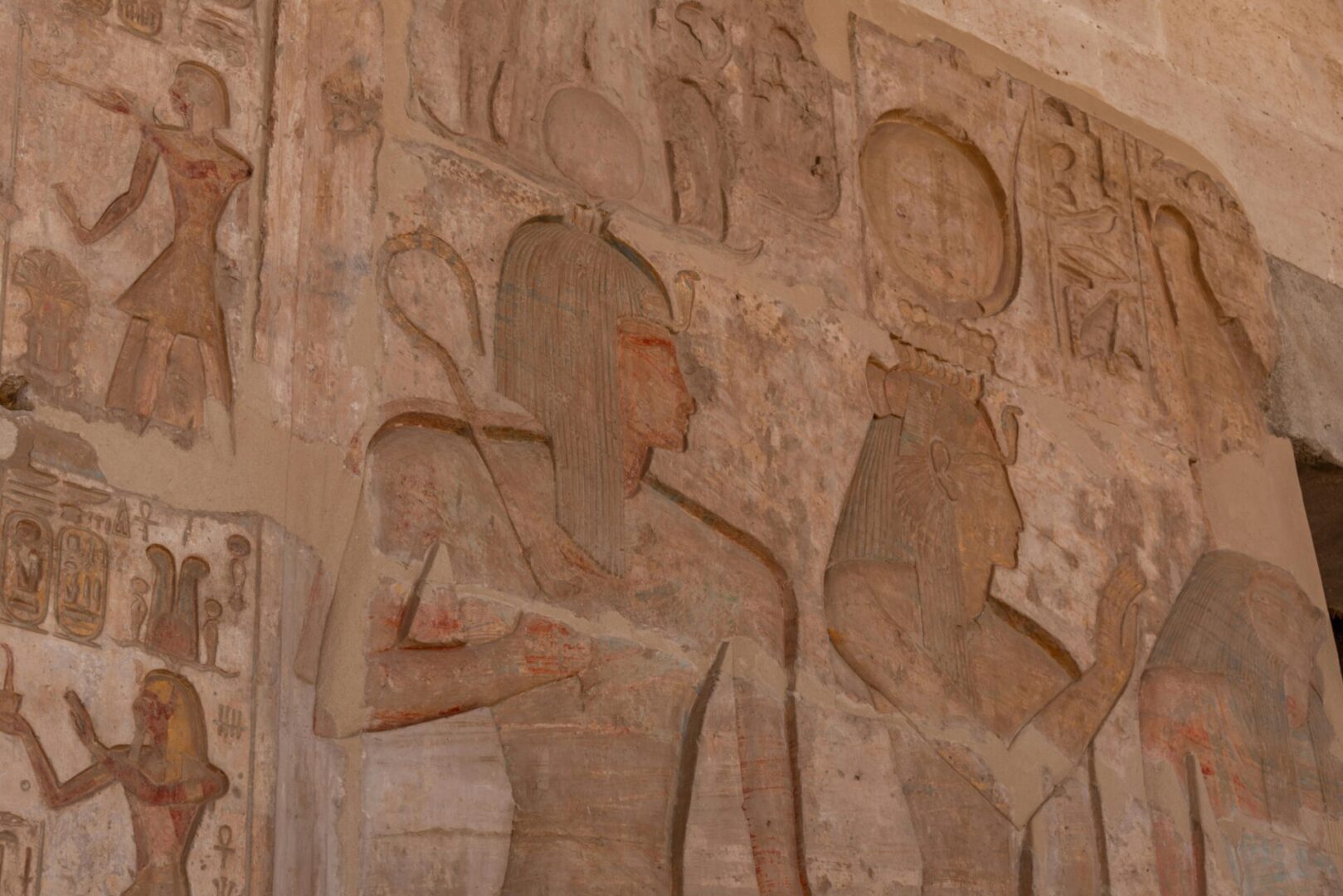
The Luxor Temple is situated on the East Bank of the city of Luxor, just a few kilometers away from the Karnak Temple.
It was established in the 15th century BCE for the worship of three gods: Amun, Khonsu, and Mut. Most of the buildings we see today within the Luxor Temple date back to the ruling periods of Kings Amenhotep III, Ramses II, and Tuthmosis III.
Luxor Temple Attractions
The Temple of Luxor boasts its first elements: two huge statues of Ramses II. These colossal statues, each standing over 14 meters high, flank the main entrance to the temple. Ramses II himself constructed the first pylon of the Temple of Luxor, which now marks the entrance. This massive wall, towering at 24 meters in height and stretching 65 meters in width, is a testament to the grandeur of ancient Egyptian architecture.
Ramses II also established the temple’s first open courtyard. Within this section, you’ll find the iconic papyrus pillars and eleven statues of King Ramses II. Further exploration reveals the chapels of Queen Hatshepsut and Tuthmosis III, adorned with their red granite columns and numerous portraits. Additionally, an intriguing section of the Temple of Luxor includes a chapel added by Alexander the Great in the 4th century.
4. The Temple of Queen Hatshepsut
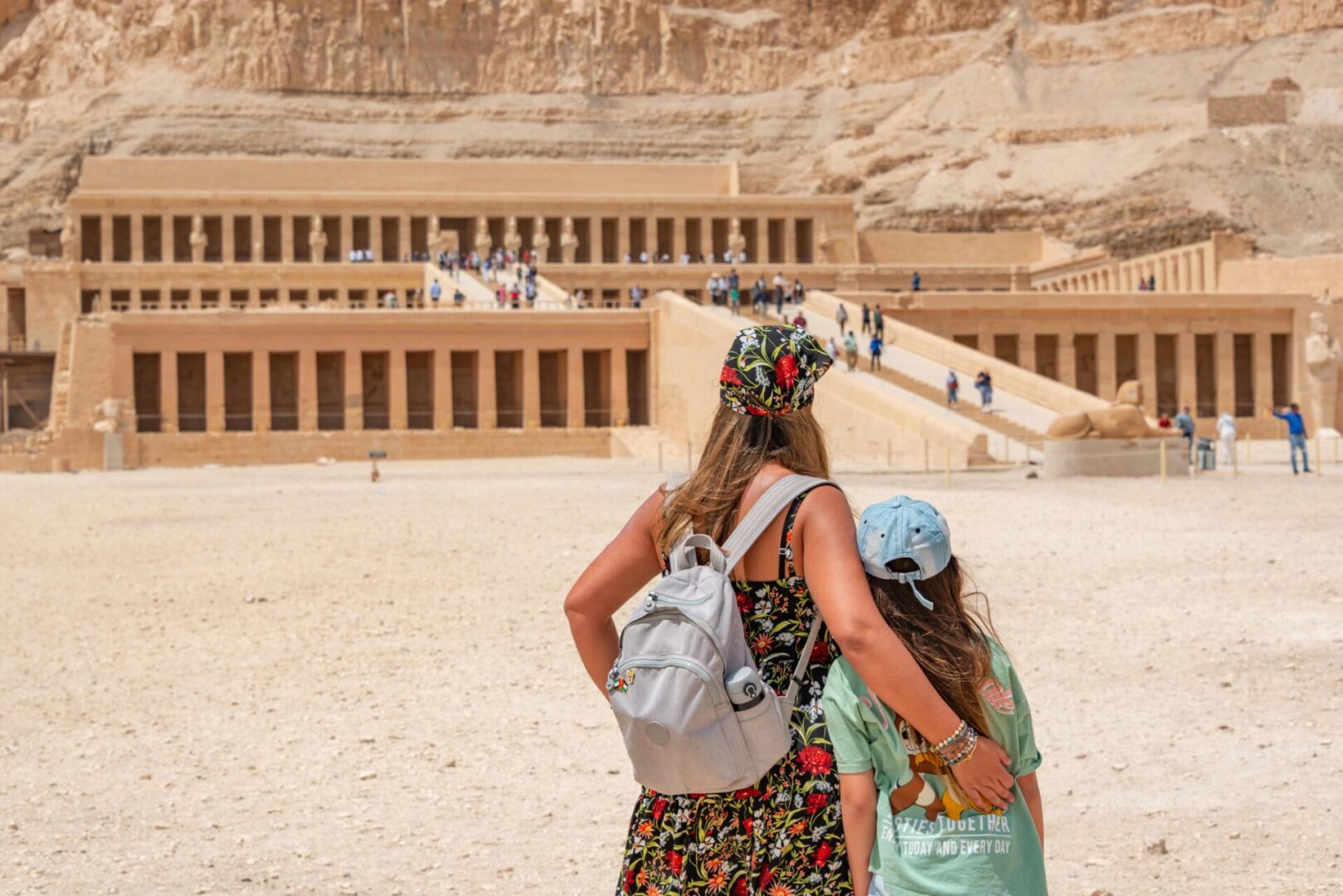
The Temple of Queen Hatshepsut is undoubtedly one of the best-preserved and perhaps the most charming mortuary temples on the West Bank of Luxor.
Notably, the builder of this magnificent temple was Queen Hatshepsut, who holds the distinction of being the first lady to rule over Egypt in ancient history. Her reign extended for an impressive 21 years, from 1503 BC to 1482 BC.
The Design and Architecture of The Temple of Queen Hatshepsut
The layout of the Temple of Hatshepsut deviates from the common design of ancient Egyptian temples.
Instead, a number of galleries and terraces replaced the hypostyle hall in the Temple of Hatshepsut. Notably, among the most remarkable features of the temple are the Chapel of the goddess Hathor and the Chapel of Anubis.
5. The Temple of Philae
The Temple of Philae stands as an amazing example of the ancient temples of Egypt. Moreover, it is among the most remarkable historical sites in the wonderful city of Aswan. Countless tourists visiting Egypt eagerly explore the wonders of the Philae Temple.
Originally located on Philae Island, the temple was later relocated after the construction of the High Dam. Now, it graces Agilkia Island near the High Dam. Notably, Taharqa played a significant role in constructing the first sections of the Temple of Philae during the 7th century BC.
The Construction of The Philae Temple
The Greco-Roman period in Egypt witnessed the construction of most of the temples of Philae. During this era, in the 3rd century BC, they erected the first temple in Philae.
Notably, an amazing part of the temple is the garden of God, which consists of a wide-open courtyard adorned with huge pillars. Additionally, the first pylon of the temple, dedicated to the worship of the goddess Isis, was meticulously constructed by Ptolemy XIII.
6. The Temple of Horus in Edfu
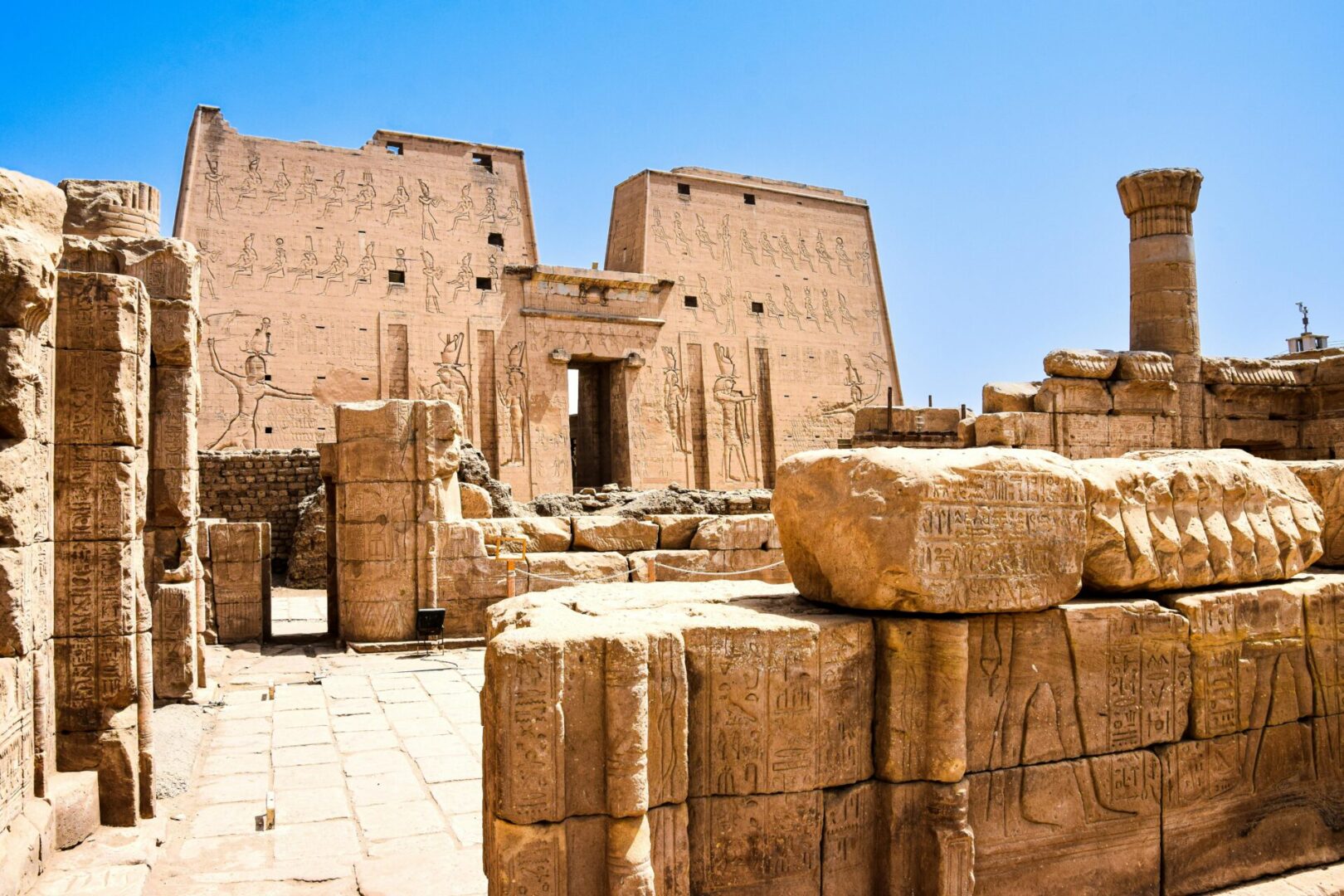
The Temple of Horus in Edfu stands as one of the most beautiful ancient Egyptian constructions across Egypt. Additionally, it boasts its immense size, ranking second only to the colossal Karnak Complex of Temples.
Furthermore, this remarkable temple is frequently included in numerous travel packages within the Nile region. Travelers who visit Egypt are particularly eager to uncover the hidden secrets held within its ancient walls.
The Construction of The Edfu Temple
The construction of the immense Temple of Horus in Edfu commenced at the beginning of the 3rd century BC. The Ptolemies actively sought to erect grand temples dedicated to ancient Egyptian gods.
As part of this endeavor, they incorporated massive pylons at the entrance of each section of the Temple of Horus in Edfu. Moreover, the expansive open yard boasts magnificently carved and decorated pillars, each crowned with substantial stone capitals.
7. The Temple of Kom Ombo
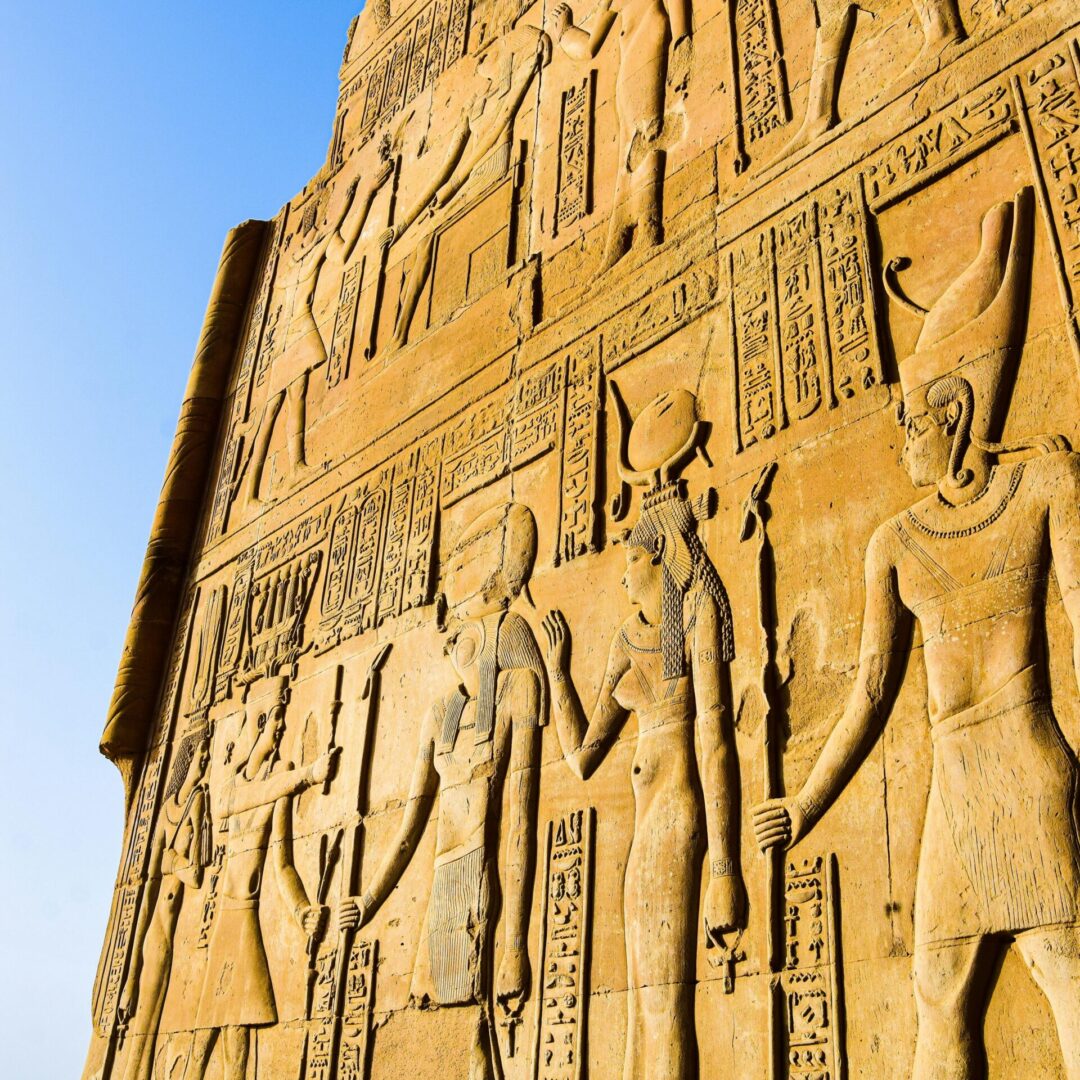
Despite Kom Ombo being famous today due to the Temple constructed during the Greco-Roman era, the area has been inhabited since the pre-dynastic period of Egyptian history.
Furthermore, the Temple of Kom Ombo, which we view today and was built during the Greco-Roman period, stands on the ruins of a much older temple.
The Construction of The Kom Ombo Temple
The more recent temple of Kom Ombo was built during the period from 205 till 180 BC in the ruling period of King Ptolemy V.
The Ptolemies specifically constructed the Temple of Kom Ombo for the worship of two gods, Sobek; the Crocodile god, and Horus, the falcon god. Moreover, the Temple of Kom Ombo was primarily constructed with limestone, taking the shape of a rectangle. Its plan and a design which is quite similar to many temples constructed during the Greco Roman period.
The design of the Temple of Kom Ombo starts with a front courtyard, followed by a hypostyle hall. Inside, there are three inner halls, and finally, two sanctuaries – one dedicated to Sobek and the other to Horus.
More Trips
Start your day with a pick-up from Aqaba Port where our representative will be waiting for you with a sign...
Embark on an eight-day exploration of Egypt's ancient wonders, beginning with the historic sites of Cairo, including the Egyptian Museum...
Day One: Begin your enchanting two-day tour to Luxor with a pick-up from Safaga port where our representative will be...


